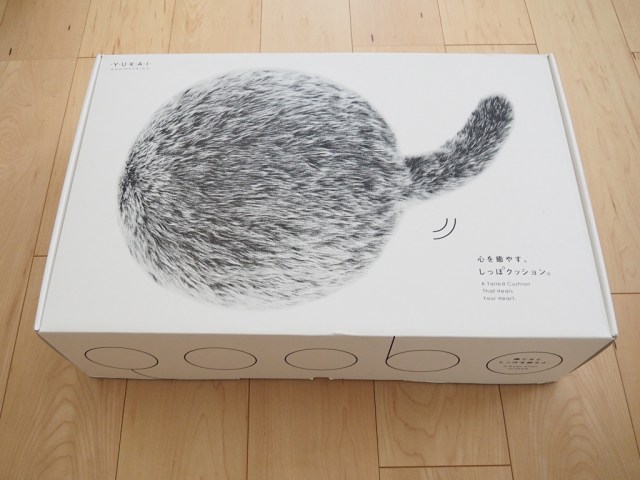
We ride Japan’s latest virtual pet sensation: a cushion with a moving tail.
Our Japanese-language reporter Punico Ninoude loves visiting her parents’ home because she gets to enjoy the unconditional love and warmth of her family job. However, being a working girl with all the responsibilities and worries that entails, she doesn’t have the time to dedicate to having a dog, or a cat, or anything else at her own place.
This is why she decided to take the virtual pet route. But rather than opting for the sterile digital company of a Tamagotchi, she chose to rent a Qoobo—a cushion-style, “therapeutic” robot that comes with its own happily wagging tail. It costs 13,200 yen (US$118.87) to purchase the robot for your own, but you can also rent one for a much more reasonable 800 yen a month through rental service Rentio here. Plug it in to charge it up, and then set it wherever you need it!
The draw of Qoobo is its intelligent tail wagging system. If you pet the cushion’s soft, furry body, the tail will respond in kind by wagging quickly or slowly.
▼ The box includes everything that Qoobo needs. No food, no litter!
Though it’s surprisingly large, Punico found that it only weighed as much as a typical large cushion. And what weight it does have lends a pleasing physicality to it, so it really does feel a bit like a pet.
▼ Snuggly, cuddly Qoobo.
Though Qoobo is just a big fluffy disc without a head or any limbs, Punico’s impression was definitely that of a cat. It just…felt feline somehow, the long, tactile tail in particular. Punico had long given up on ever owning a cat due to her allergies, but now she could realize that long-forgotten dream with Qoobo!
It was time to activate Qoobo’s twitchy tail. Punico gave the beige switch next to the base of its tail a firm boop and the tail immediately began swooping to-and-fro, causing her to emit a gasp of delight.
Just as promised, the tail speed responded to how she pet it. First, she tried long, languid strokes…
▼ The tail movements became lazy and slow to match!
▼ Then, when she sped up, the tail sped up too!
Qoobo will also wag its tail unprompted, which leads to Punico’s final experiment. You see, she’d always felt just a little bit jealous of those people on social media who share pictures of their pets hampering their work.
▼ Admittedly, you have to set it in place yourself.
Still, it felt incredibly novel to Punico to be able to whine “I can’t work like thiiiiis” at her fuzzy little friend.
Qoobo does come with some unfortunate downsides that Punico ran into during her month-long rental. For one thing, the movement of swishing its tail is accompanied by a gentle whirring sound. It’s too quiet to be very noticeable in the daytime, but at night it might startle you. Punico adjusted for this by treating it as Qoobo’s equivalent of a bark.
The other issue is that it’s very easy for Qoobo to revert into a lifeless, basic cushion before you notice. It can operate for eight hours, but then it needs to be charged again. Punico would accidentally leave the switch on and forget to “feed” Qoobo its requisite diet of electricity, so poor Qoobo ended up staring at the wall for long periods of time.
▼ Sorry, Qoobo.
Also, since Qoobo has a lustrous, fluffy coat, it is necessary to remove it and wash it occasionally to stop it from getting dirty, especially if you have a young human child in your home, like Punico does, who may be spreading mess and grime around.
Don’t assume that because Qoobo is a robot that it will last forever, either. The company assures that its lifespan will last for around 700,00 shakes of its fluffy tail. Assuming its tail wags 100 times per day, that’s a lifespan of about two years. Nothing gold can stay…and nothing so cute can last, either. Still, if you’re interested in cuddly robots, Qoobo is here for you, as is the Lovot brand.
Related: Qoobo, Rentio
Images © SoraNews24
● Want to hear about SoraNews24’s latest articles as soon as they’re published? Follow us on Facebook and Twitter!
[ Read in Japanese ]

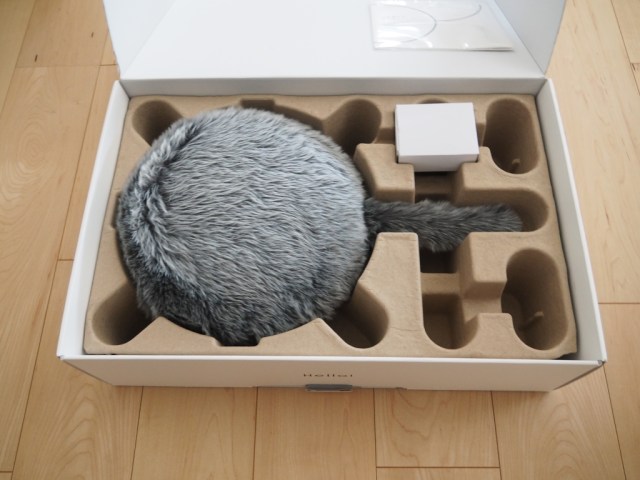
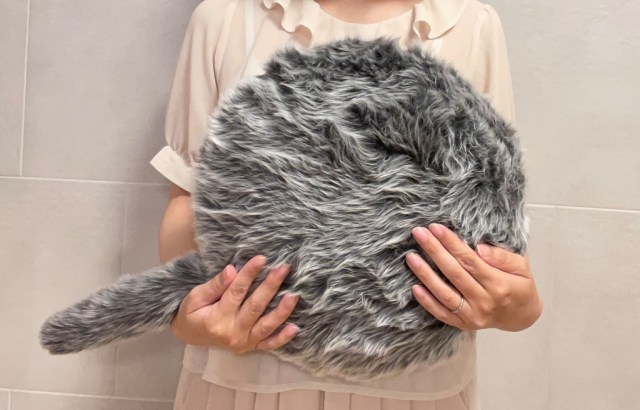
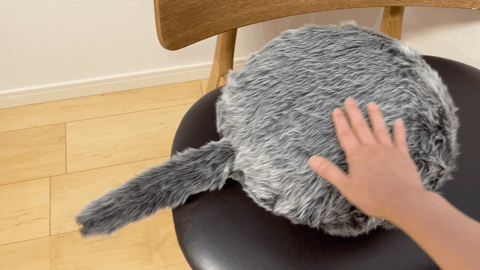
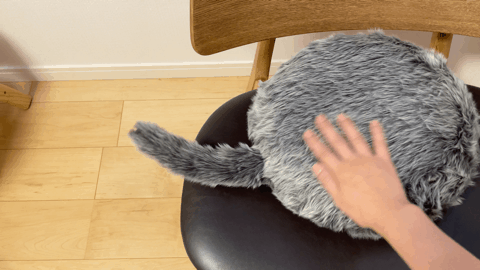
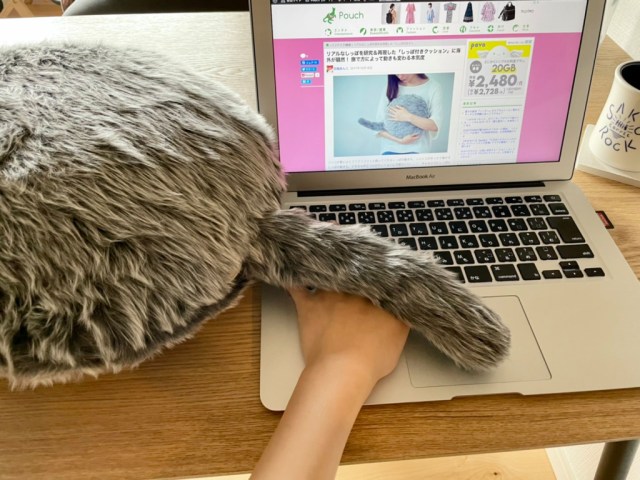
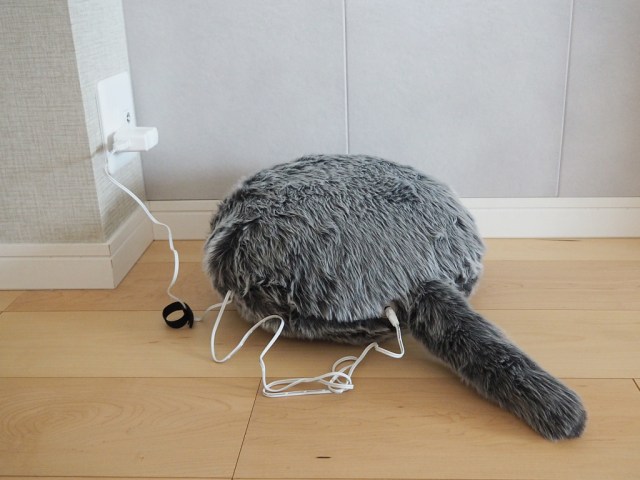
 Celebrate your oshi’s birthday in style with this fully customisable cake
Celebrate your oshi’s birthday in style with this fully customisable cake Yokohama Air Cabin: A new futuristic ropeway in the middle of the city
Yokohama Air Cabin: A new futuristic ropeway in the middle of the city Walking Bingo: A clever alternative to adventure games like Pokémon GO
Walking Bingo: A clever alternative to adventure games like Pokémon GO Looking for a unique afternoon tea in Tokyo? Have a picnic indoors at Fruit Picnic in Harajuku
Looking for a unique afternoon tea in Tokyo? Have a picnic indoors at Fruit Picnic in Harajuku Meet Qoobo, the cushion-shaped therapy robot with a moving tail!【Pics, Videos】
Meet Qoobo, the cushion-shaped therapy robot with a moving tail!【Pics, Videos】 Our reporter takes her 71-year-old mother to a visual kei concert for the first time
Our reporter takes her 71-year-old mother to a visual kei concert for the first time McDonald’s new Happy Meals offer up cute and practical Sanrio lifestyle goods
McDonald’s new Happy Meals offer up cute and practical Sanrio lifestyle goods Disney princesses get official manga makeovers for Manga Princess Cafe opening in Tokyo
Disney princesses get official manga makeovers for Manga Princess Cafe opening in Tokyo Is the new Shinkansen Train Desk ticket worth it?
Is the new Shinkansen Train Desk ticket worth it? Tokyo’s most famous arcade announces price increase, fans don’t seem to mind at all
Tokyo’s most famous arcade announces price increase, fans don’t seem to mind at all Randomly running into a great sushi lunch like this is one of the best things about eating in Tokyo
Randomly running into a great sushi lunch like this is one of the best things about eating in Tokyo Osaka’s creepy cute mascot speaks for first time, adds more fuel the creepy OR cute debate【Video】
Osaka’s creepy cute mascot speaks for first time, adds more fuel the creepy OR cute debate【Video】 Kyushu-exclusive Black Mont Blanc goes nationwide in a “Special” way
Kyushu-exclusive Black Mont Blanc goes nationwide in a “Special” way Beautiful new Final Fantasy T-shirt collection on the way from Uniqlo【Photos】
Beautiful new Final Fantasy T-shirt collection on the way from Uniqlo【Photos】 There’s a park inside Japan where you can also see Japan inside the park
There’s a park inside Japan where you can also see Japan inside the park We try out “Chan Ramen”, an underground type of ramen popular in the ramen community
We try out “Chan Ramen”, an underground type of ramen popular in the ramen community New Studio Ghibli bedding sets are cool in all senses of the word
New Studio Ghibli bedding sets are cool in all senses of the word Our Japanese reporter visits Costco in the U.S., finds super American and very Japanese things
Our Japanese reporter visits Costco in the U.S., finds super American and very Japanese things Foreign English teachers in Japan pick their favorite Japanese-language phrases【Survey】
Foreign English teachers in Japan pick their favorite Japanese-language phrases【Survey】 New Pokémon cakes let you eat your way through Pikachu and all the Eevee evolutions
New Pokémon cakes let you eat your way through Pikachu and all the Eevee evolutions Japanese convenience store packs a whole bento into an onigiri rice ball
Japanese convenience store packs a whole bento into an onigiri rice ball Hanton rice — a delicious regional food even most Japanese people don’t know about, but more should
Hanton rice — a delicious regional food even most Japanese people don’t know about, but more should Final Fantasy, Kingdom Hearts, and Dragon Quest pet product line announced by Square Enix
Final Fantasy, Kingdom Hearts, and Dragon Quest pet product line announced by Square Enix Studio Ghibli releases Kiki’s Delivery Service chocolate cake pouches in Japan
Studio Ghibli releases Kiki’s Delivery Service chocolate cake pouches in Japan Japan’s bone-breaking and record-breaking roller coaster is permanently shutting down
Japan’s bone-breaking and record-breaking roller coaster is permanently shutting down New definition of “Japanese whiskey” goes into effect to prevent fakes from fooling overseas buyers
New definition of “Japanese whiskey” goes into effect to prevent fakes from fooling overseas buyers Foreign passenger shoves conductor on one of the last full runs for Japan’s Thunderbird train
Foreign passenger shoves conductor on one of the last full runs for Japan’s Thunderbird train Kyoto bans tourists from geisha alleys in Gion, with fines for those who don’t follow rules
Kyoto bans tourists from geisha alleys in Gion, with fines for those who don’t follow rules Studio Ghibli unveils Mother’s Day gift set that captures the love in My Neighbour Totoro
Studio Ghibli unveils Mother’s Day gift set that captures the love in My Neighbour Totoro Domino’s Japan now sells…pizza ears?
Domino’s Japan now sells…pizza ears? Toyota built a life-sized Miraidon Pokémon and are letting people test drive it this weekend
Toyota built a life-sized Miraidon Pokémon and are letting people test drive it this weekend New Japanese KitKat flavour stars Sanrio characters, including Hello Kitty
New Japanese KitKat flavour stars Sanrio characters, including Hello Kitty Sales of Japan’s most convenient train ticket/shopping payment cards suspended indefinitely
Sales of Japan’s most convenient train ticket/shopping payment cards suspended indefinitely Sold-out Studio Ghibli desktop humidifiers are back so Totoro can help you through the dry season
Sold-out Studio Ghibli desktop humidifiers are back so Totoro can help you through the dry season Japanese government to make first change to romanization spelling rules since the 1950s
Japanese government to make first change to romanization spelling rules since the 1950s Ghibli founders Toshio Suzuki and Hayao Miyazaki contribute to Japanese whisky Totoro label design
Ghibli founders Toshio Suzuki and Hayao Miyazaki contribute to Japanese whisky Totoro label design Doraemon found buried at sea as scene from 1993 anime becomes real life【Photos】
Doraemon found buried at sea as scene from 1993 anime becomes real life【Photos】 Tokyo’s most famous Starbucks is closed
Tokyo’s most famous Starbucks is closed One Piece characters’ nationalities revealed, but fans have mixed opinions
One Piece characters’ nationalities revealed, but fans have mixed opinions We asked a Uniqlo employee what four things we should buy and their suggestions didn’t disappoint
We asked a Uniqlo employee what four things we should buy and their suggestions didn’t disappoint Princesses, fruits, and blacksmiths: Study reveals the 30 most unusual family names in Japan
Princesses, fruits, and blacksmiths: Study reveals the 30 most unusual family names in Japan Studio Ghibli’s new desktop Howl’s Moving Castle will take your stationery on an adventure
Studio Ghibli’s new desktop Howl’s Moving Castle will take your stationery on an adventure Immersive Museum offers impressive impressionist fun this summer in Tokyo
Immersive Museum offers impressive impressionist fun this summer in Tokyo We try Taiwan’s newest taste sensation: Pudding Ramen!
We try Taiwan’s newest taste sensation: Pudding Ramen! Support your faves and avoid oshikatsu burnout — advice from our resident otaku
Support your faves and avoid oshikatsu burnout — advice from our resident otaku Adorable, hopping shiba dog can’t contain its excitement about seeing its beloved owner
Adorable, hopping shiba dog can’t contain its excitement about seeing its beloved owner New snack sensation: super sour and certainly salty lemon flavour potato chips
New snack sensation: super sour and certainly salty lemon flavour potato chips Slowpoke Pokémon PC cushion is ready to help you feel great about not getting very much done
Slowpoke Pokémon PC cushion is ready to help you feel great about not getting very much done Wear your cats on your hands this winter—They’ll wag their tails with every smartphone swipe
Wear your cats on your hands this winter—They’ll wag their tails with every smartphone swipe Add some feline appeal to your backside with moving clip-on cat tails 【Video】
Add some feline appeal to your backside with moving clip-on cat tails 【Video】 Belly photos from underneath are the next big trend in hamster cuteness
Belly photos from underneath are the next big trend in hamster cuteness New soft and huggable Pikachu tail-pillow is every Pokémon fan’s dream come true
New soft and huggable Pikachu tail-pillow is every Pokémon fan’s dream come true Japanese Twitter freaks out over cartoonist’s cute cat freaking out over its tail 【Video】
Japanese Twitter freaks out over cartoonist’s cute cat freaking out over its tail 【Video】 Young and elderly alike can satisfy their feline frenzy with this $180 cat robot companion
Young and elderly alike can satisfy their feline frenzy with this $180 cat robot companion Own the lighter side of ukiyo-e with a zodiac chimera and weird tiger-stone items by Felissimo
Own the lighter side of ukiyo-e with a zodiac chimera and weird tiger-stone items by Felissimo Twin Tail Day makes Twitter a paradise for guys in Japan【Photos】
Twin Tail Day makes Twitter a paradise for guys in Japan【Photos】 Life-size giant freshwater stingray blankets to go on sale in Japan if enough people want them
Life-size giant freshwater stingray blankets to go on sale in Japan if enough people want them Japanese vocaloid Hatsune Miku takes the reins from Scarlett Johansson in new shampoo commercial
Japanese vocaloid Hatsune Miku takes the reins from Scarlett Johansson in new shampoo commercial
Leave a Reply